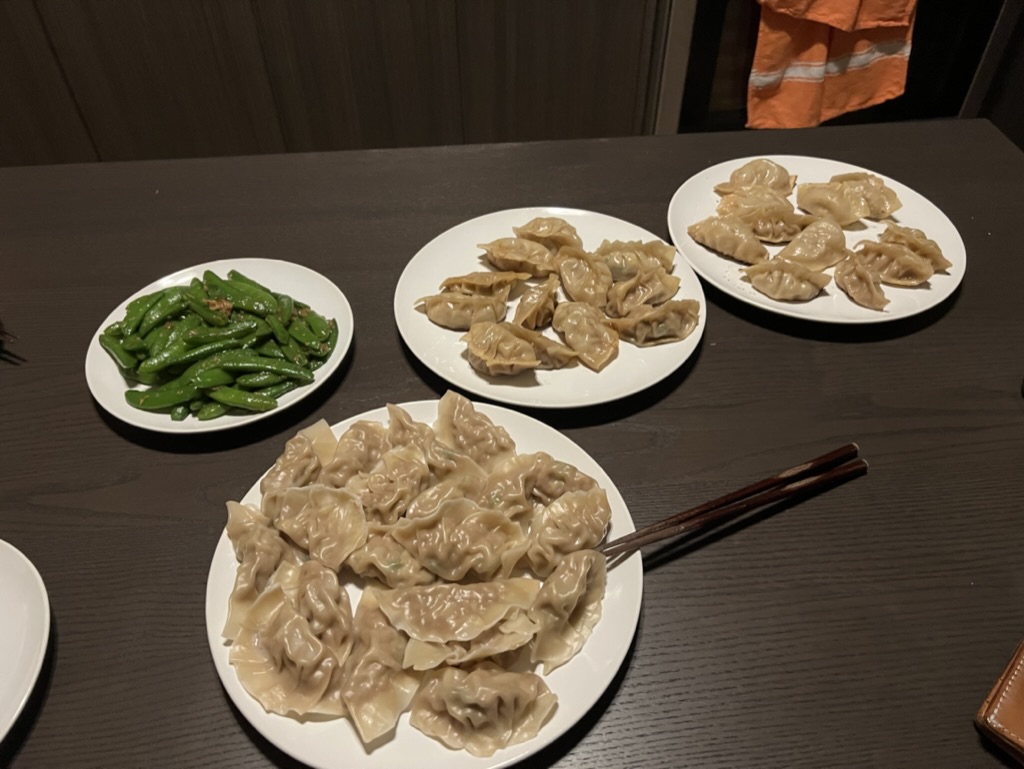Dumplings

This matters to me because...
Many reasons. For one, I've never made my own dumpling fillings, despite having wrapped dumplings with my family throughout childhood, so there's a sense of new things. Lunar New Year is just about to happen, and I just found it fitting to have this entry on 团年 (the day before the new year). Finally, I was planning on doing this as a get-together with someone, and I wanted to do a test-run to make sure that the fillings, wrapping, etc all worked out.
In a future session, I look forward to making my own dumpling skins as well.
The picture shown is the second time I made dumplings this month. There's a cameo with some sweet peas stir-fried with a garlic sauce.
Ingredients
- Store-bought dumpling skins
- Ground pork
- Chinese chives
- Chinese napa cabbage
- Salt
- Soy sauce
- Dark soy sauce
- Shaoxing wine
- Sesame oil
- White pepper powder
2 Comments
- I noticed that the dumpling skins I bought from the store are transluscent when you boil them. I highly doubt the skins I would've made myself could do that, but I appreciate that it was a nice indicator on whether the dumplings are fully cooked. They seem to float up to the surface of the water if they're cooked as well.
- Pan-frying dumplings only requires about 2-3 minutes on the pan. I didn't realize that, so there was some burning that happened. We added some water afterwards and covered the pan to do some steaming. The dumplings began to expand, presumably becuase of all of the steam getting built-up inside the filling; we thought they were going to explode. Luckily that wasn't the case.
2 Learnings
- Making dumplings is an increadibly easy and straightforward process. Once you've learned how to wrap them (which can just be a sloppy and pedestrian as crimping the two sides together), I found it very easy to cook them. That's why so many of these are just frozen and then re-boiled afterwards. I can really see myself doing this in the future for myself. Perhpas I'll need to do some adjustments with macros, but I look forward to making these again soon.
- Chinese napa cabbage in Mandarin is called 白菜, which is also "bok choy". In Cantonese, it's called "hsiew choy". When I was asking all of my Mandarin-speaking friends, when they said "猪肉白菜", I genuinely though I needed to buy the classic bulb-like bok choy, when in fact, I just needed to get napa cabbage. Luckily a friend in the same apartment as mine needed an emergency grocery dump, and I was able to secure a whole head of cabbage. It tasted great, regardless.
References
The majority of my reference is from childhood memories, talking to my parents, and asking friends. The specific amount of seasonings came from this YouTube video, but I've largely eyeballed it.
